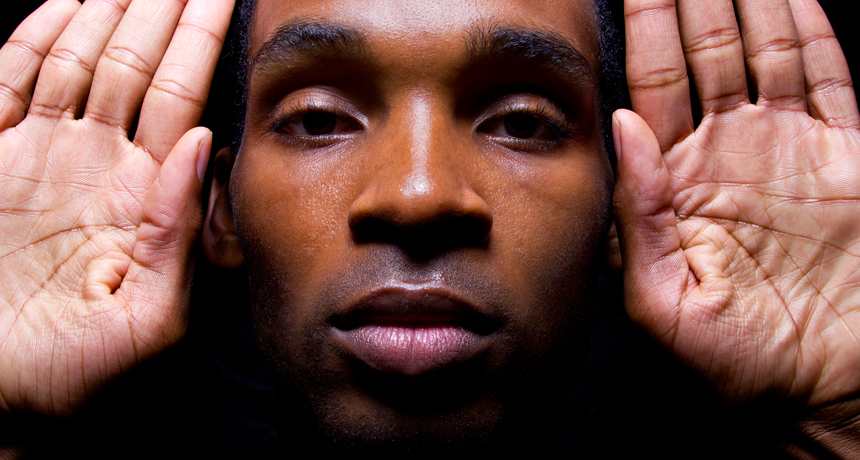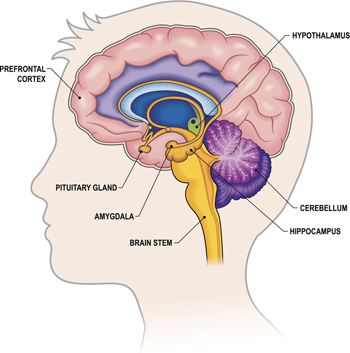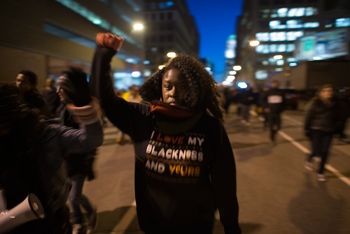Heartbeat can affect racial perception of threat
New study may help explain why some white police may be more likely to shoot unarmed blacks than unarmed whites

Unarmed blacks in the United States are more likely to be shot by police than unarmed whites. A new study finds that heartbeats can affect how threatening they perceive someone of another race to be.
innovatedcaptures / iStockphoto
“There’s a guy in here with a pistol,” the 911-phone caller said. “You know, it’s probably fake. But he’s, like, pointing it at everybody.” The man had called police in Cleveland, Ohio, from a city park. The date was November 22, 2014.
“Is he black or white?” the dispatcher asked.
The man described the person’s clothing and then noted that he was black. “He’s probably a juvenile, you know,” the caller said. As for the gun, he added, “I don’t know if it’s real or not.”
Minutes later, police officers arrived. Within seconds of exiting their car, one of them shot and killed Tamir Rice. Only then did they see that the 12-year-old boy had a toy air gun.
No criminal charges were brought against the officers. But on January 13, 2017, the city started disciplinary proceedings. Regardless of the outcome, Rice is dead.
Within the last three years, police have killed more than 100 unarmed people in the United States. The victims have been people of different races. Staff at the Washington Post recently reviewed data on police shootings. In 2015, their data show, unarmed black men were seven times as likely to be killed by police as were unarmed white men.
Justin Nix works at the University of Louisville in Kentucky. As a criminologist, he is a social scientist who studies rates and likely causes of crime. In a new study, he and his colleagues warn against comparing shooting numbers, as the Washington Post did, to total population figures. Why? Other U.S. data show a higher rate of blacks involved in crime. So Nix and his team used a statistics tool known as regression analysis. It accounts for other factors that might also have had an impact here. They include such things as rates of arrest, calls for police help and more.
Yet even after accounting for such things, Nix’s team found that black civilians killed by U.S. police were more than twice as likely to have been unarmed. “These findings,” the study says, “suggest evidence of implict bias” in the real world. Nix and his team just described their findings online, February 8, in Criminology & Public Policy.
“We all know social stereotypes and racial stereotypes seem to be embedded in our culture,” says Manos Tsakiris. He’s a neuroscientist at Royal Holloway, University of London in England. He was part of a research team that has just investigated the possible role of normal body functions in racist behaviors. The team’s results suggest that the phase of a heartbeat can affect how threatening a behavior appears — if and only if the person being judged had belonged to another race.
Tsakiris’ group published its findings January 17 in Nature Communications.
From the heart to the brain
Racist behavior treats people in a certain way because of their race or ethnic background. Prejudices or stereotypes about different groups can be negative or positive. Sometimes racist behavior results from biases that people know they have. Other times, racist actions result from implicit bias. That’s a prejudice that an individual may not be aware of. Implicit biases can affect people’s minds even when they don’t want to be biased.
The new study looks at one way implicit biases can translate into action. It focused on a link between nerves running between the heart and brain.
Our hearts beat constantly. As the lower chambers contract, they pump blood to the lungs and the rest of the body. This part of each heartbeat is called systole (SIS-toh-lee). Between beats, the lower chambers rest and fill with blood from the upper chambers. That part of each heartbeat is called diastole (Dy-AS-toh-lee). Physically, we don’t feel any different during these two phases of each heartbeat. But Tsakiris and his team suspected the two phases might influence our mental processes even without our being aware of it.
To test this, he and his team gave people different tests. In one, they showed white participants a series of faces — some white, some black. The volunteers had to decide quickly if a metal object shown alongside each face was a gun or a harmless tool such as a wrench. The researchers compared how quickly people reacted depending on whether black or white faces were paired with either guns or tools.

Another test was set up to mimic the split-second decisions that police sometimes have to make. The researchers showed photos of a black or white man holding a gun or a harmless object such as a wallet or phone. People had to quickly decide whether to shoot or not.
In both of the tests, the photos flashed just as the volunteer’s heart pumped out blood. Other times they appeared during the rest period.
And just half a heartbeat might mean the difference between life or death, these new data suggest. Specifically, people were more likely to respond as if they thought a black person was a threat if they had to make that judgment as their heart pumped blood — systole. When people made their judgments during the diastole part of the heartbeat, the same bias did not appear.
“We know that the heart is in dynamic communication with the brain,” says Sarah Garfinkel, who also worked on the study. She’s a neuroscientist at Brighton and Sussex Medical School in England. That connection between the heart and brain, she says, could explain why test subjects acted the way they did.
“Each time the heart beats, it activates receptors known as baroreceptors,” Garfinkel explains. The receptors are in and near the heart. They respond to changes in pressure. With each heartbeat, the pressure of blood pumping through blood vessels changes. Nerve pathways from those receptors connect to an area in the brain stem. Nerves carry signals from that area to another part of the brain. It’s called the amygdala. “We know the amygdala is the part of the brain that deals with fear and threat processing,” she notes.
Normally, the brain responds to signals from the baroreceptors by keeping a person’s blood pressure under control. But extra activity in the amygdala might also make it extra alert for signs of possible danger. And that activity could exaggerate how the mind responds in high stakes situations. So someone may be more likely to “see” a threat when there isn’t one. In effect, the study finds, the brain could fool the person into thinking they see something — like a gun — that’s not really there.
In 2014, Garfinkel and others showed a link between heartbeats and whether people thought photos showed people who were afraid. That study appeared in the Journal of Neuroscience. In their new study, the researchers showed that heartbeats also are linked to the perception of threat based on racial biases.
“In this case we’re just tapping into a prevailing stereotype in society that black individuals are considered threatening,” says Ruben Azevedo. A psychologist, he’s at Royal Holloway and also worked on the study. But people’s heartbeats didn’t bolster all stereotypes, he added. Some people think black people are more athletic than whites. Yet timing of the heartbeat didn’t make people more likely to think an item next to a black person’s face was a piece of sports equipment.
What’s next?
Many mechanisms in the body are automatic. Still, that doesn’t mean society can’t do something to lessen the number of mistaken shootings by police, says Tsakiris. The amygdala plays a big part in how people perceive threats. But usually another part of the brain also has a role. Called the prefrontal cortex, it deals with conscious thinking and decision-making.

Suppose you walk down an alley, Tsakiris says, and see someone from another race or ethnic group. You might have an implicit bias that makes you fearful. But the prefrontal cortex could control how you act. It might tell you to calm down and keep walking normally. That kind of conscious control might be tapped to train police officers. One lesson from the new findings “is that we want to actually strengthen the effect of the control processes,” Tsakiris suggests.
Another idea, Garfinkel says, would be to help people become aware of how their heartbeats might amp up racial bias. Perhaps that could counteract the urge to see a threat when there isn’t one.
And there’s more hope, says Gordon Moskowitz. He’s a psychologist at Lehigh University in Bethlehem, Penn. His work deals with unconscious stereotyping and how people might control it. It might be possible to train people to automatically rein in stereotypes. In one 2012 study, he and other researchers trained people to set a goal to treat others equally. Later, the study volunteers were slower to link images of black people with words such as “lazy” or “criminal.” Those words reflect some people’s negative stereotypes about black people.
Researchers already knew a lot about how a sense of threat exaggerates stereotyping, Moskowitz says. What’s new is how Tsakiris and his team used the way the body functions to probe whether people saw a threat linked to race. Responses that fit a stereotype were more likely when the heart pumped out blood.

“The more intriguing finding to me is the lack of the stereotype effect during diastole,” Moskowitz says. He wonders if that finding might lead to new ways to block or control stereotypes. If so, someone might not have to consciously decide to calm down. Instead, the person might simply remain calm all along. In other words, perhaps controlling a stereotype might become as automatic and easy as acting in response to an implicit negative bias can be.
Meanwhile, race remains a factor in police shootings. That problem adds to tensions in society. It also leads to tragedy for people like Tamir Rice and their families.
“While we’ve known that signals from the heart to the brain can change the way we process threat and fear, never before has anyone shown it to apply to racial stereotypes,” Garfinkel says. “This is something that needs to be further understood, as it has such devastating potential consequences.”







